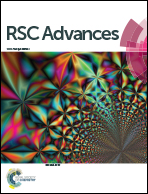Dendritic nanostructured FeS2-based high stability and capacity Li-ion cathodes†
Abstract
Here we show that dendritic architectures are attractive as the basis of hierarchically structured battery electrodes. Dendritically structured FeS2, synthesized via simple thermal sulfidation of electrodeposited dendritic α-Fe, was formed into an electrode and cycled vs. lithium. The reversible capacities of the dendritic FeS2 cathode were 560 mA h g−1 at 0.5C and 533 mA h g−1 at 1.0C after 50 cycles over 0.7–3.0 V. Over 0.7–2.4 V, where the electrode is more stable, the reversible capacities are 348 mA h g−1 at 0.2C and 179 mA h g−1 at 1.0C after 150 cycles. The good cycling performance and high specific capacities of the dendritic FeS2 cathodes are attributed to the ability of a dendritic structure to provide good ion and electron conducting pathways, and a large surface area. Importantly, the dendritic structure appears capable of accommodating volume changes imposed by the lithiation and delithiation process. The presence of a Li2−xFeS2 phase is indicated for the first time by high-resolution transmission electron microscopy (HRTEM) and scanning transmission electron microscopy (STEM) electron energy loss spectroscopy (EELS). We suspect this phase is what enables electrochemical cycling to possess high reversibility over 0.7–2.4 V.



 Please wait while we load your content...
Please wait while we load your content...